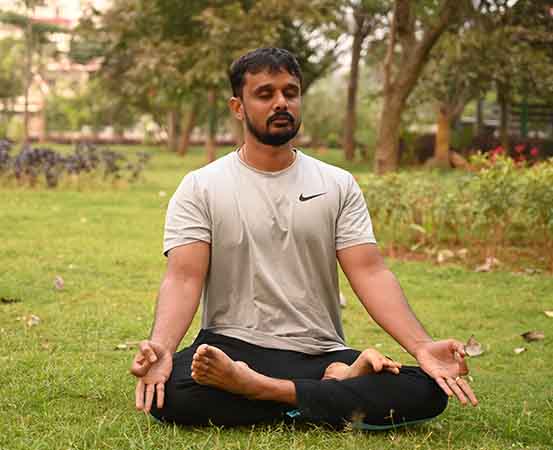
Two extreme characters are common in a fitness set-up: those who skip their workout sessions at the drop of a hat and those who never take a break. But it is important to note that both these approaches are counterproductive.
When you are making steady progress and your energy levels are consistent, it is natural to consider skipping rest days. However, rest days are crucial for your workout schedule for several reasons, including maintaining optimal performance and injury prevention.
Of course, too much rest is not good. The key is to find the right balance, which varies from person to person, say experts.
Why are rest days relevant?
According to Christopher Pedra, consultant for sports and exercise medicine, Sir HN Reliance Foundation Hospital, Mumbai, the equation ‘training + recovery = adaptation’ best illustrates the essential relationship between training and recovery in achieving fitness goals.
“This equation encapsulates the idea that both aspects are necessary for the body to adapt and improve,” says Pedra.
Rest days play a critical role in allowing the body to recover from the stress of workouts, repair and grow muscles, and adapt to the training stimulus. Insufficient rest might prevent the body from adapting to the training, which could impede progress and raise the risk of burnout or overuse injuries.
“Lack of rest days can lead to overtraining,” says Amal C Bose, fitness trainer and assistant professor of physical education, Sree Sankara College, Thiruvananthapuram, Kerala. “You become physically and mentally disturbed when you overtrain. Overtraining can be caused by a variety of reasons — missing rest days being one of the main ones.”
Frequency and necessity of rest
During rest days, the body undergoes the essential recovery processes. This includes repairing the micro tears in the muscles caused by exercise, replenishing energy stores like glycogen, and regulating hormone levels for growth and repair.
“Rest allows the body to restore balance and optimize performance by enhancing muscle strength, endurance and overall fitness levels,” says Pedra.
At the same time, everyone doesn’t have the same need for rest. Factors such as fitness level, age, training intensity and overall health significantly influence the frequency and necessity of rest days.
“Athletes and highly active individuals often engage in intense training sessions regularly, which can lead to a greater physical stress on their bodies,” says Pedra. “Consequently, they may need more frequent or strategically placed rest days to prevent exhaustion, optimize recovery and reduce the risk of injuries caused by overuse.
“Beginners or individuals with lower training volumes might not place as much strain on their bodies during workouts. Therefore, they may require fewer rest days initially as their bodies adapt to the new physical demands.
However, it is important to note that rest days are vital even for beginners: for allowing the body to recover and adapt to exercise stress.
Tailoring rest days based on need
Maintaining a good balance between training and recovery requires tailoring rest days to meet individual demands and modifying them as fitness levels change over time.
“The first step is to assess your fitness level by considering factors such as cardiovascular endurance, strength and overall conditioning,” says fitness coach Yash Agarwal, founder of Yash Fitness, Kolkata.
Once you understand your fitness level, the next step is to identify goals: weight loss, muscle gain, endurance improvement or strength development.
“Based on individual needs, you can easily modify the frequency of rest days after assessing the intensity of training sessions, taking into account factors like duration, frequency and types of exercises. Higher intensity requires more frequent rest,” says Agarwal, who recommends consulting trainers, coaches or medical professionals to determine the optimal rest-day schedule based on your specifics and goals.
Balancing workouts and recovery
To maintain a balance between challenging workouts and recovery, it is essential to create a structured plan while remaining attuned to the body’s signals.
“Gradually adjusting workout intensity, incorporating diverse exercises and prioritizing adequate sleep and nutrition are fundamental for supporting recovery,” says Pedra.
Among the numerous factors influencing recovery and performance, sleep and nutrition stand out as essential and scientifically supported elements.
“In today’s pursuit of improved athletic performance, individuals often focus on trendy gadgets or advanced tests while overlooking the fundamental importance of sufficient sleep and proper nutrition,” says Pedra.
Structuring fitness programs with rest days
A well-structured fitness program incorporates rest days strategically. This could involve scheduling active recovery sessions or lighter workouts on rest days, incorporating progressive overload (gradually increasing exercise intensity) and allowing for periodic de-load weeks where training volume or intensity decreases.
On rest days, performing active recovery involves low-intensity exercises that increase blood flow, facilitate muscle recovery and alleviate muscle soreness. Activities like light jogging, swimming, yoga or mobility exercises are ideal. Active recovery differs from complete rest as the former keeps the body moving without stressing it excessively.
Takeaways
- The body cannot adapt and get better unless it receives both training and rest.
- Rest days are essential for the body to repair and grow muscles, recover from the stress of workouts, and eventually adjust to the training stimulus.
- Not getting sufficient rest can hinder progress, increase the chance of burnout or overuse injuries, and result in overtraining.
- Everybody has a different requirement for rest days. The frequency and necessity of rest days are influenced by factors such as age, training intensity, fitness level and overall well-being.

















